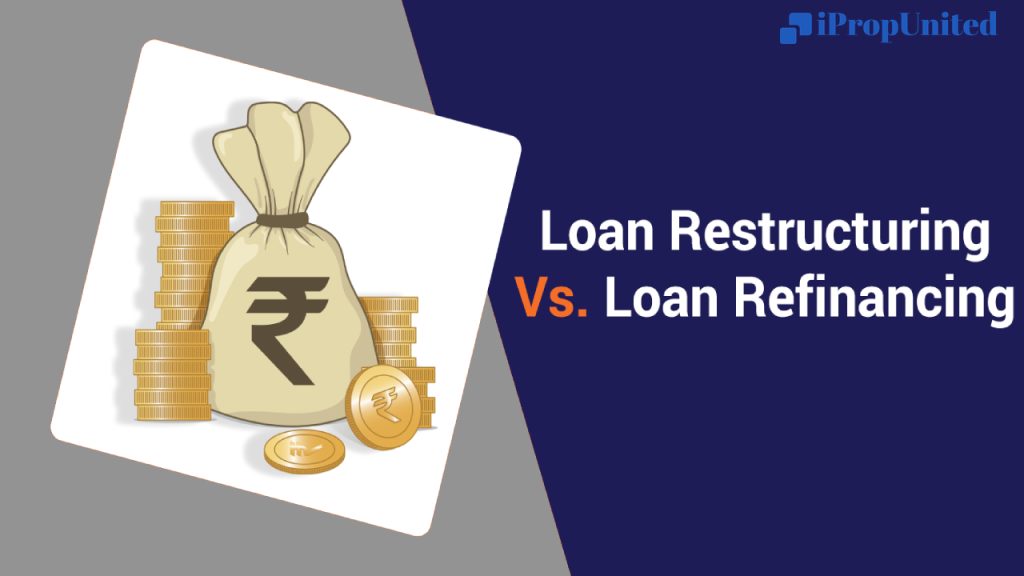There are options available to help people and businesses who are having trouble repaying their current loans. Restructuring and refinancing loans are two of the most popular options for loan modifications.
Although they both provide comparable advantages, their methods of operation and duration are different. This article compares loan restructuring and loan refinancing, explains how each type of loan modification functions, and when you should consider each choice.

Loan Restructuring and Loan Refinancing: What are they?
What is Loan Restructuring?
It is the procedure for changing the terms of a loan. This can include extending the repayment period, lowering the interest rate, or changing the loan structure. Loan restructuring is frequently used to make a loan more affordable to the borrower.
This might entail extending the time frame for repayment, decreasing the interest rate, or altering the size of the monthly payment. Restructuring is frequently carried out to lower interest rates or prevent default on a loan.
What is Loan Refinancing?
It involves taking out a new loan to settle an earlier loan. This can be done to obtain a lower interest rate, obtain a different repayment plan, or access the property’s equity. Refinancing a loan is frequently done to reduce interest costs or to combine several loans into a single payment.
This is also referred to as a personal loan balance transfer. It’s possible that the terms of the new loan will differ from those of the existing loan, including the interest rate, length of time until repayment is due, and amount of the monthly payment. Refinancing can be used to lower a loan’s monthly payment, the total amount of interest paid on the loan, or both.
Difference between Loan Restructuring and Loan Refinancing
Restructuring a loan generally refers to changing the terms of an existing loan. Refinancing a loan typically entails taking out a new loan with new terms to replace an existing one.
- There are numerous factors that could influence a borrower’s decision to restructure their loan rather than refinance it. For instance, they might no longer be able to qualify for a new loan as a result of a change in their financial situation, or they might not want to pay the additional fees and costs that come with getting a new loan.
- A loan can be restructured by altering the interest rate, extending or reducing the repayment period, or changing the repayment schedule. The total amount of interest paid over the course of the loan may rise as a result, but the monthly payments may become more manageable.
- The monthly payments are typically lower when a loan is refinanced because a new loan with a lower interest rate is taken out. You have the option of switching lenders by using a personal loan balance transfer.
Therefore, it’s crucial to take into account all of the relevant factors and select the option that best suits your particular needs and circumstances when deciding whether to restructure or refinance your loan.
Deciding on Loan Restructuring or Loan Refinancing
You should consider the advantages and disadvantages of each option when applying for a personal loan before choosing one.
- If you are having difficulty making your current payments, loan restructuring may be a viable option. Negotiating loan terms may provide a grace period on payments or a lower monthly payment.
- If you can get a lower interest rate than what you’re currently paying, refinancing your loan might be able to save you money. Additionally, it might give you the option to lengthen the loan’s term, which would reduce your monthly payments. However, you will need to apply for a new loan.
Conclusion
Loan restructuring and loan refinancing are the two most distinct debt-related terms. Refinancing is the process of replacing an old loan with a new one. Restructuring is the process by which a borrower renegotiates the terms of their current loan.
Both options may be advantageous for borrowers who are having trouble repaying their loans, depending on the situation.
Follow and Connect with us: Twitter, Facebook, Linkedin, Instagram







